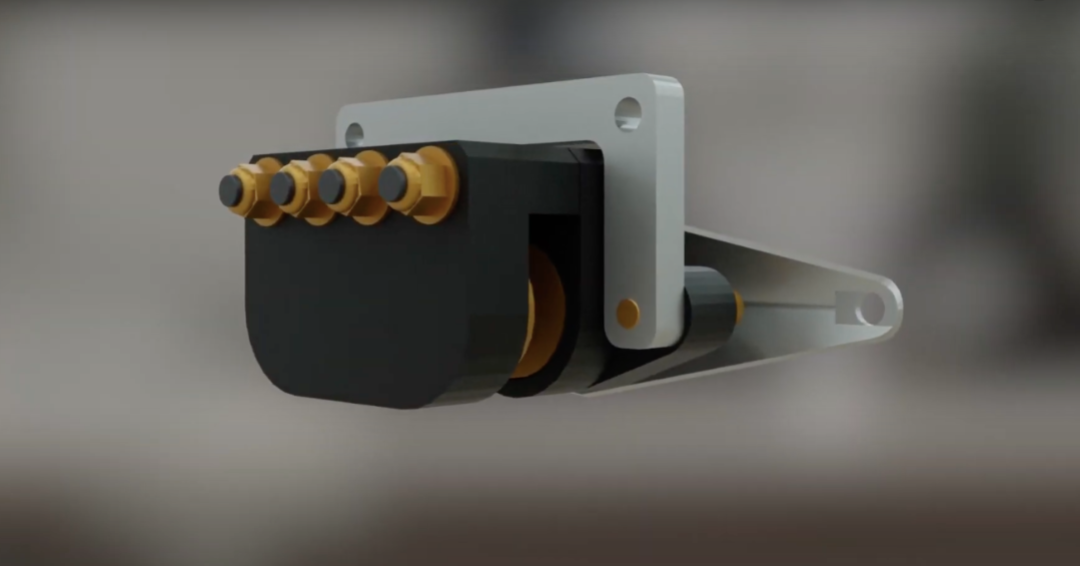
Industrial equipment is expensive, so cost-effective operation depends on reliable performance and component durability. When it comes to industrial brakes, regular inspection and maintenance not only support longer life but can help prevent potentially catastrophic breakdowns.
Industrial brakes use friction to stop, or slow, moving components. Friction and the heat it produces cause parts to wear, which eventually reduces effectiveness or leads to outright brake failure. Pneumatic, hydraulic, and fail-safe (spring applied) brakes each require somewhat different maintenance routines, though some practices are the same across the board.
For all types of industrial caliper brakes
- Seals must be properly lubricated and positioned, with no signs of drying out.
- Never exceed the maximum pressure rating of the brake. Excessive pressure puts undue stress on hardware and internal components, causing premature wear. It also causes undue wear on seals. They may continue to hold pressure for a while, but eventually, they will fail.
- Ensure the rotor or rail and friction pads are clean of debris or oils to assure proper function and improve pad life.
- Protect the caliper as much as possible in harsh operating environments. Keep pads dry and clean. With pistons retracted, check that pads are not in contact with any part of the disc surface to avoid unwanted wear or tension.
Proper adjustment assures consistent operation and prolongs life. The brake should be positioned such that the pads are aligned parallel to the brake or rail. Watch as Chad Randleman demonstrates how to adjust a mechanical caliper disc brake.
Pneumatic Caliper Brakes
For pneumatic operation, regularly inspect the system to ensure air is clean. Contaminated air can reduce pressure as well as potentially increase wear. While not necessary, lubricated air can assist in prolonging the service life of the seals.
Hydraulic Caliper Brakes
Hydraulic systems require proper hydraulic fluid. Brakes with standard Buna seals are fine when mineral based hydraulic fluid is used.. However, if DOT 3 brake fluid is being used, then EPR (ethylene propylene rubber) seals should be used. Otherwise, the brake fluid will eventually dissolve the seals.
For hydraulic systems, both brake lines and the brake itself must be bled to eliminate any air bubbles before use. This is especially important in fail-safe brakes, because the presence of air in the system can change the accuracy of release pressure. The bleeding procedure is simple:
- Connect the caliper to the hydraulic system
- Loosen (but don’t remove) one bleeder screw
- Rotate the caliper so the loosened screw is elevated, then gently (no more than 5 psi) pump hydraulic fluid into the caliper
- When fluid flows steadily from the bleeder screw, tighten it again
- Now the brake can be pressurized to the published pressure rating.
Fail-Safe Brakes
Fail safe brakes can be pneumatic or hydraulic. For either pneumatic or hydraulic operation, it is essential to monitor pad wear closely because the amount of pad available directly affects braking force put out by the springs.
Typically these brakes have a cycle threshold rating where springs need to be replaced before they start to create problems.
If you’re seeing any loss of braking force yet the pads appear to be at the required thickness, this could indicate the springs are starting to break down and lose force. Replace them now. Otherwise, they could eventually damage, at which point repair becomes very difficult or impossible.
Safety first! Keep in mind that with fail-safe brakes, the spring is actively under pressure when the brake is at rest. Care should be taken when servicing the brakes knowing that a loss of pressure could result in the caliper engaging unexpectedly. While it is important to pressurize these brakes to install or remove them from the rotor or rail, it is extremely important to take precautions when removing or torquing mounting bolts. .
Choose the right material, right from the start
You can save money and boost performance by following these steps to extend the life of your industrial caliper brakes. However, it’s also true that ensuring proper heat dissipation allows for cooler operation, so it is imperative to choose brakes made of materials designed for your type of application. Whether you need replacement parts or advice on industrial brake selection, we’re here to help.


